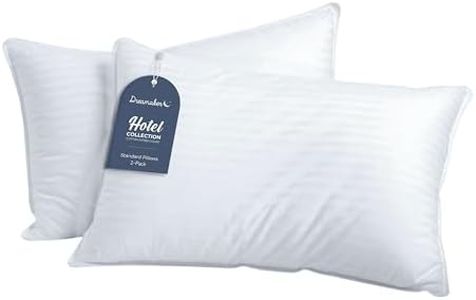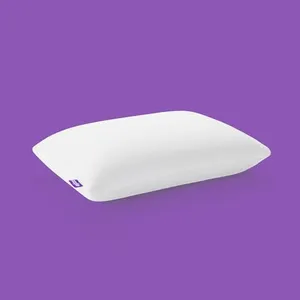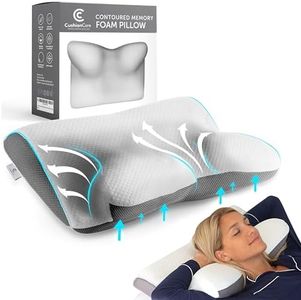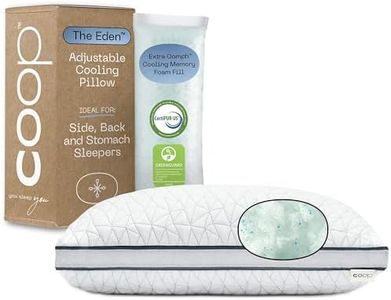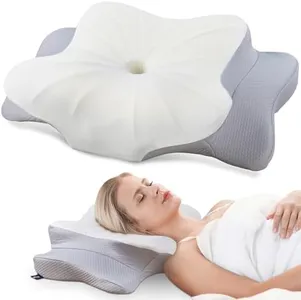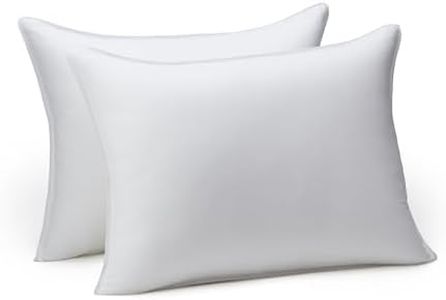We Use CookiesWe use cookies to enhance the security, performance,
functionality and for analytical and promotional activities. By continuing to browse this site you
are agreeing to our privacy policy
10 Best Pillows For Stomach Sleepers
From leading brands and best sellers available on the web.By clicking on a link to a third party's website, log data is shared with that third party.
Buying Guide for the Best Pillows For Stomach Sleepers
When choosing a pillow as a stomach sleeper, the main goal is to keep your neck and spine comfortably aligned, reducing any pressure points and helping you wake up refreshed. Since stomach sleeping puts more stress on your neck and lower back, the right pillow can make a big difference in your sleep quality and overall comfort. It's important to focus on pillow thickness, firmness, fill material, and breathability so that you can avoid aches and maintain a healthy posture.Loft (Pillow Thickness)Loft refers to how thick or high a pillow is, which affects how well it supports your head and neck. This is especially important for stomach sleepers because a high (thick) pillow can bend the neck unnaturally, leading to discomfort. Loft is usually divided into low (less than 3 inches), medium (3-5 inches), and high (over 5 inches). Stomach sleepers generally do best with low-loft pillows because they keep the neck in a more natural, straight position, reducing strain. If you know you like a bit more cushioning but still want support, a medium loft might work, but avoid high loft unless you have unique needs like very broad shoulders.
FirmnessFirmness is about how soft or hard a pillow feels when you rest your head on it. For stomach sleepers, a softer pillow is often better because it allows your head to sink in enough to keep your spine level. Pillows usually come as soft, medium, or firm. Stomach sleepers usually benefit from soft to medium firmness, as hard pillows can angle the neck too much and cause stiffness. If you have a preference for more support, a medium-firm pillow might work, but always ensure it doesn't force your head up.
Fill MaterialThis is about what’s inside the pillow, which affects its feel, support, durability, and even how warm it is. Common fill materials are memory foam, down, down alternative, and latex. For stomach sleepers, softer, more moldable fills like down or down-alternative are often ideal, as they can be compressed easily. Memory foam is also an option if it’s thinner and softer, while latex is typically firmer and bouncier, which may not be as comfortable. Consider your preference for softness, any allergies (since natural down can trigger them), and how well the pillow keeps its shape over time.
BreathabilityBreathability refers to how well a pillow allows air to flow through, which can keep you cool and comfortable throughout the night. Some fill materials, like memory foam, tend to retain heat, while others like cotton, down, or specially designed cooling pillows are better at staying cool. If you tend to get warm while sleeping or want a fresher feel, seek out pillows advertised as breathable or cooling, or those with covers made from natural, moisture-wicking fabrics.
AdjustabilitySome pillows allow you to add or remove filling so you can tailor the height and firmness to your liking. This means you can experiment and find your perfect comfort level, making the pillow more personalized for your stomach sleeping needs. If you’re unsure what thickness or feel will suit you best, an adjustable pillow gives you the flexibility to test and fine-tune until you’re satisfied.
